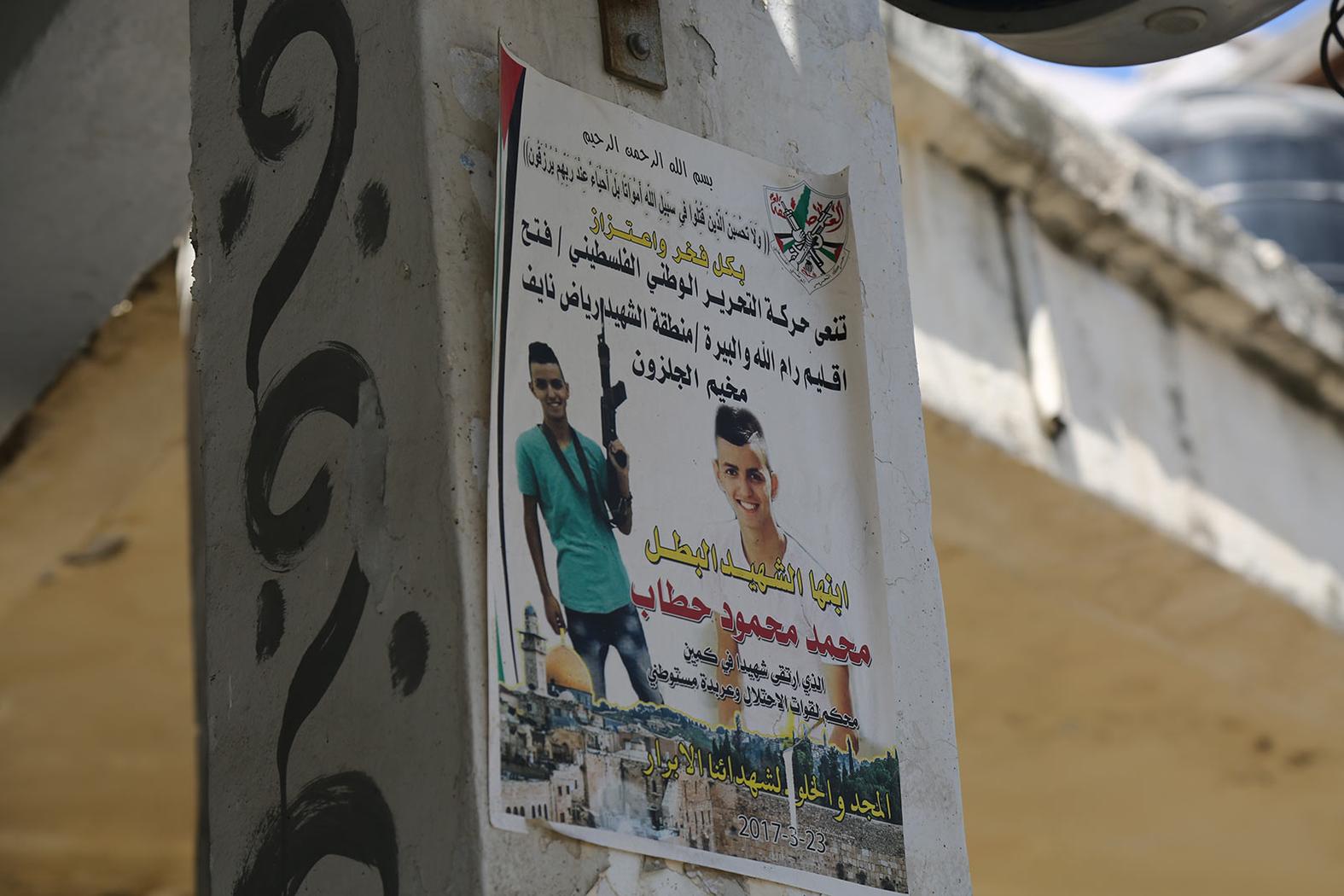This article originally appeared on VICE Arabia
Just a few hours after Mohammed Atta Lafi’s death in July 2015, posters with his portrait were plastered around his home in the Qalandiya refugee camp, near Jerusalem. The 19-year-old was a Palestinian fighter with the al-Aqsa Martyrs’ Brigades – local media claim he was beaten and killed during an Israeli raid on the camp.
Videos by VICE
Walking down any street or alley in Palestinian cities, they’re hard to miss – posters commemorating Palestinians (combatants and non-combatants) who died as a result of the state’s ongoing conflict with Israel. These so-called “martyr posters” are everywhere – on shop windows, on people’s front doors, on monuments and on public buildings.

The practice began some time in the 1970s. At the time, the prints were drawn by hand and showed the deceased alongside other symbols of the fight – the Palestinian flag and military slogans like “Revolution until victory” and “The people’s martyrs are paving the road to liberation”.
By the late 1980s – as Palestine launched its first large scale uprising against the presence of Israeli forces in the West Bank and Gaza – the posters were printed on a much larger scale with local presses, and they suddenly started popping up everywhere in the region. The Israeli government considered them a tool of recruitment and propaganda and subsequently banned production and circulation of the posters. But even though designers could land in prison for creating them, that measure hardly slowed down production.
“After the signing of the 1993 Oslo Peace Accord, Palestinians were allowed to open private printing presses without Israeli supervision,” says Muhammad Abu Latifa, a prominent member of Qalandiya camp’s governing body. “As they no longer worried about Israelis tracing the source, more posters were produced than ever before.”

According to one designer who worked on posters in a printing press – who agreed to speak with me on the condition of anonymity – the design process has changed considerably in the last couple of decades. Gradually, the Palestinian flag was replaced by more specific political images – like that of the region’s former president Yasser Arafat or particular texts from the Quran.
The posters also started featuring the logo and colours of the political movement the fighter had belonged to. “For example, the images on posters of Hamas supporters might include the group’s founders Ahmed Yassin and Abdel Aziz al Rantisi, as well as green, which is their signature colour,” he said.

Not everyone in Palestine supports the message the posters send. “During the first stages of the Palestinian revolution, people saw the posters as a way of immortalising the individual and their actions,” explained Dr. Walid Al Shurafa, a professor of Media and Journalism at Berzeit University in the West Bank.
“But these days, some communities use the tradition to romanticise the conflict. An example of that is the fact that recent posters often feature a lot of weapons.” Dr. Al Shurafa also believes that some political movements use them to push their own agenda. “Some factions that have lost a lot of national influence, pay for these posters and cover them with their own imagery just to stay relevant.”

By the start of the second Palestinian uprising in September of 2000, Palestinian fighters got into the habit of designing their own posters – selecting the portrait, accompanying text and colour scheme before going to their deaths. Mahdi Abu Ghazele, a former leader of the al-Aqsa Martyrs’ Brigades, remembers the day his friend Fadi showed him the design he had picked – a photo of himself standing next to an array of homemade bombs. After Fadi’s death in June 2006, at the age of 30, Mahdi had the poster printed.
Watch: Rebel Rabbis: The Ultra-Orthodox Jews Who Want to See Israel Dismantled.
Ghazi Bin Ode, who works for MADA, the Palestinian Centre for Development and Media Freedoms, claims that Israeli military forces are still shutting down printing presses that print these posters in the West Bank, confiscating equipment and supplies. In 2016, MADA reported that seven printing presses across Palestine were broken into, and four were permanently shut down.
But it seems like the main reason these posters might disappear from Palestinian streets in the near future will not be Israeli enforcers, but social media. Young Palestinian fighters are increasingly more interested in being remembered online, rather than on walls and shop windows. It’s hard to tell what the future will look like, but it’s safe to say that online these posters will be even harder to ban or eliminate.




